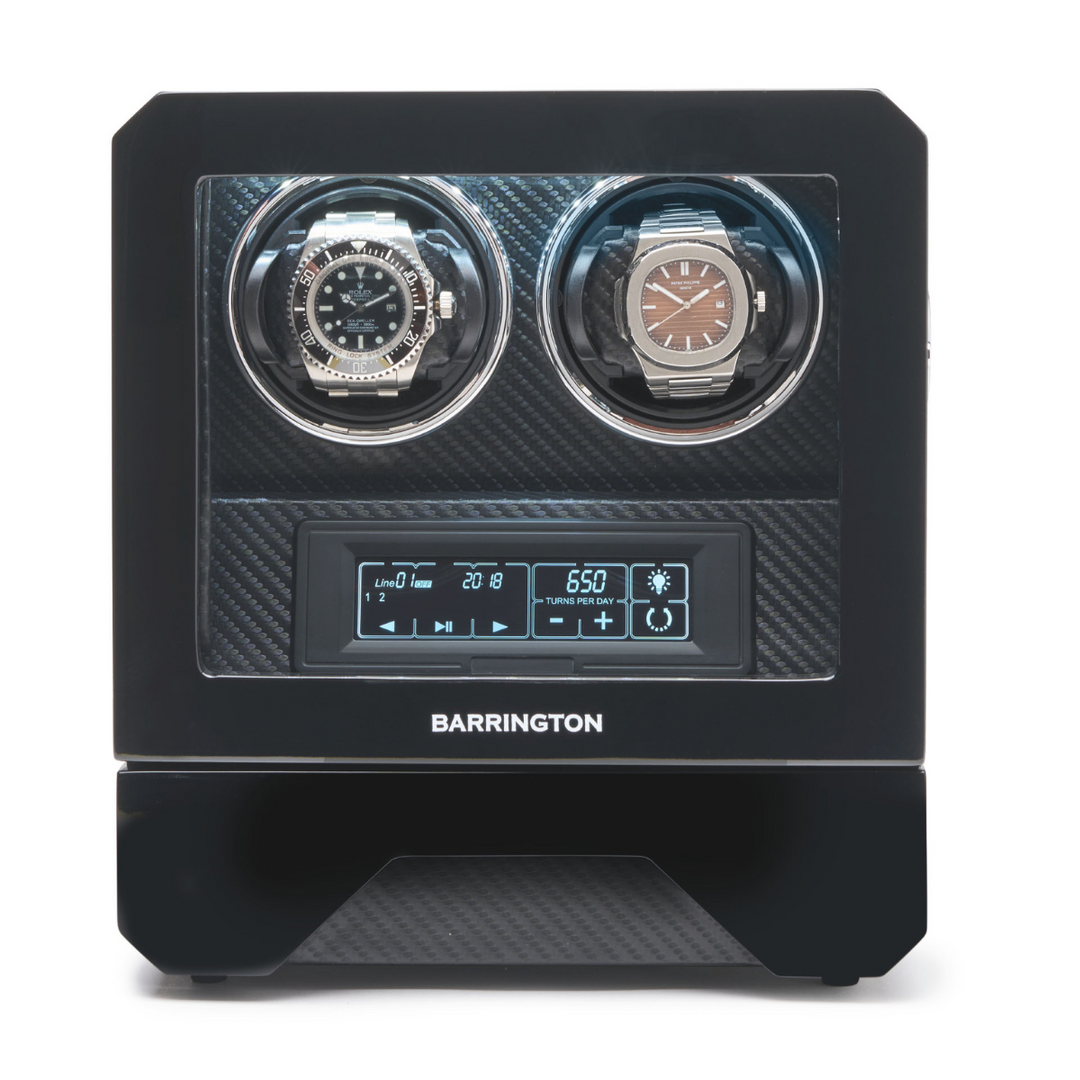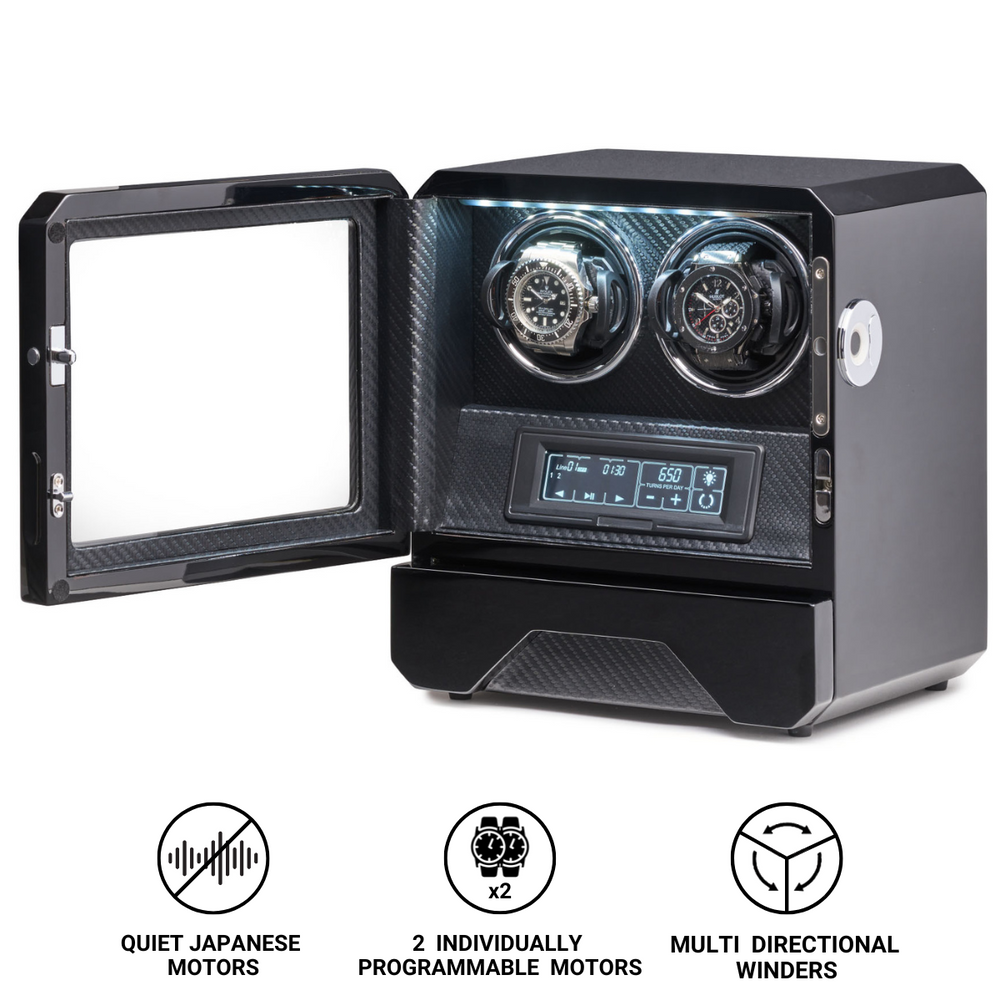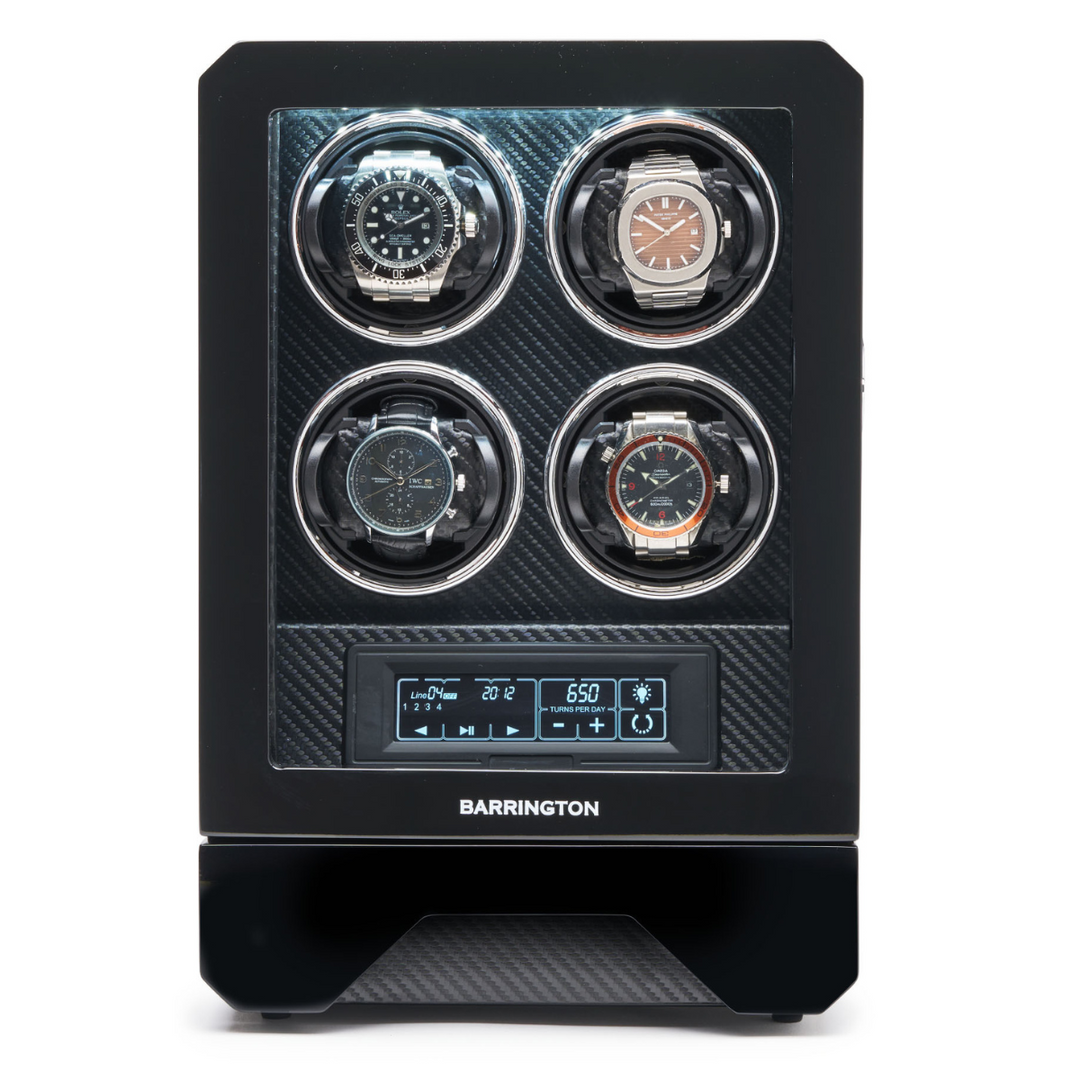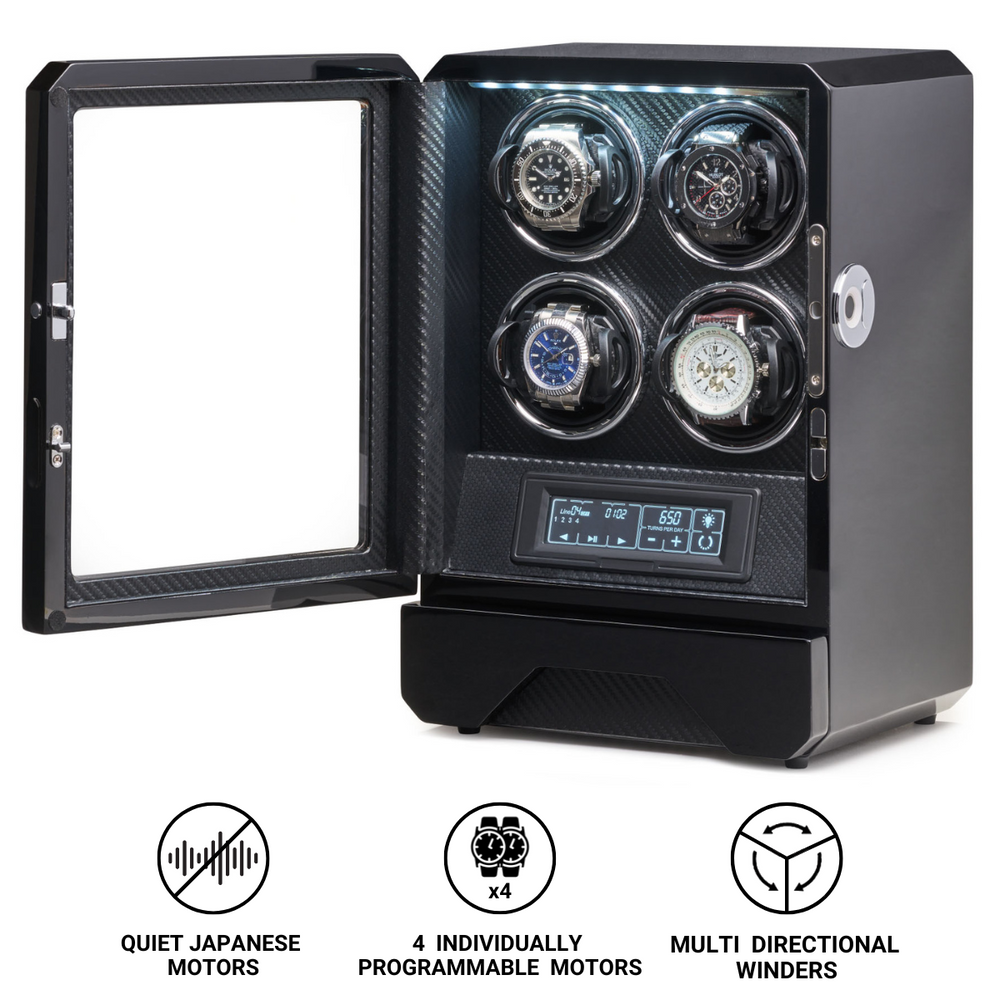What is Crystal?
The crystal is one of the most essential yet often overlooked components of a wristwatch. It is the transparent cover that protects the dial and hands, allowing the wearer to view the time while safeguarding the intricate mechanism within. Although it might appear simple at first glance, the watch crystal plays a vital role in the overall durability, functionality, and aesthetics of a timepiece. It must resist scratches, impacts, and environmental elements while maintaining perfect clarity and optical precision.
The choice of crystal material greatly influences a watch’s character, price, and performance. From the early days of soft acrylic domes to the modern era of scratch-resistant sapphire, the evolution of the crystal reflects the broader technological and artistic progress of watchmaking itself.
The Origins of Watch Crystals
The earliest watch crystals appeared in the 17th and 18th centuries when pocket watches became widespread. These early covers were made from thin sheets of natural glass. While clear and visually appealing, glass was fragile and prone to shattering when dropped. Watchmakers soon began experimenting with alternatives that offered greater resilience without sacrificing transparency.
By the early 20th century, as wristwatches replaced pocket watches, durability became even more important. Watches were now exposed to more rigorous use and environmental stress. Around this time, acrylic (a type of clear plastic) emerged as a practical substitute for glass. It was lightweight, flexible, and less likely to shatter on impact, making it ideal for military and sports watches.
However, acrylic was easily scratched, leading manufacturers to continue searching for stronger materials. This pursuit eventually led to the development of hardened mineral glass and later synthetic sapphire, both of which revolutionised watchmaking by combining optical clarity with superior toughness.
The Function of the Watch Crystal
The crystal serves several key purposes that go beyond mere aesthetics. Its design and material selection are critical to the watch’s longevity and performance.
-
Protection
The crystal forms a barrier between the external environment and the delicate interior components of the watch. It shields the dial, hands, and movement from dust, dirt, moisture, and mechanical shocks. A properly sealed crystal also plays an important role in maintaining water resistance, especially in diving and sports watches. -
Visibility
A high-quality crystal ensures clear visibility of the dial under various lighting conditions. Optical distortion, reflections, and glare must be minimised to maintain readability. Many modern crystals incorporate anti-reflective coatings to enhance legibility and colour fidelity. -
Structural Integrity
In modern case design, the crystal contributes to the overall strength and rigidity of the watch. Some watches, especially those designed for deep-sea diving, rely on the crystal’s structural integrity to withstand significant water pressure.
The Main Types of Watch Crystals
The material used for the crystal defines its durability, scratch resistance, and visual qualities. There are three primary types of watch crystals: acrylic, mineral, and sapphire. Each has distinct advantages and trade-offs that suit different watch categories and price points.
Acrylic Crystal (Plexiglass or Hesalite)
Acrylic crystals are made from polymethyl methacrylate (PMMA), a lightweight and impact-resistant plastic. This material became popular in the mid-20th century due to its affordability and practicality. It remains in use today, particularly in vintage-style watches and those intended for heavy-duty use.
Advantages:
-
Highly impact-resistant and unlikely to shatter, making it ideal for tool watches.
-
Can be easily polished to remove scratches and restore clarity.
-
Provides a warm, vintage appearance that enhances the aesthetic of classic designs.
Disadvantages:
-
Prone to surface scratches and scuffs from everyday wear.
-
Less optically pure than glass or sapphire, with minor distortion under certain lighting.
One of the most famous uses of acrylic crystal is in the Omega Speedmaster Professional, the first watch worn on the Moon. NASA specifically chose the Hesalite crystal for its resistance to shattering in zero gravity, where flying shards of glass could be dangerous.
Mineral Crystal
Mineral glass crystals are made from silica-based glass that has been heat-treated or chemically hardened to improve scratch and impact resistance. They offer a balance between the durability of sapphire and the affordability of acrylic.
Advantages:
-
More scratch-resistant than acrylic while remaining more affordable than sapphire.
-
Can be manufactured in various shapes, including flat, domed, or curved profiles.
-
Often treated with additional coatings to enhance strength and clarity.
Disadvantages:
-
Can crack or shatter upon strong impact.
-
Cannot be polished if scratched, requiring full replacement.
Mineral glass is widely used in mid-range watches from brands such as Seiko, Citizen, and Casio. It is also common in everyday wristwatches and fashion models where durability and cost-efficiency are key considerations.
Sapphire Crystal
Sapphire crystal represents the pinnacle of watch crystal technology. Made from synthetic corundum (aluminium oxide), sapphire is second only to diamond in hardness on the Mohs scale. It offers unmatched scratch resistance and exceptional optical clarity, making it the preferred choice for luxury and professional watches.
Advantages:
-
Extremely resistant to scratches from metal, sand, and most other materials.
-
Exceptional transparency and optical quality, often enhanced by anti-reflective coatings.
-
Provides a sense of luxury and refinement consistent with high-end timepieces.
Disadvantages:
-
More expensive to manufacture and replace than other types of crystals.
-
Can shatter or chip upon hard impact, as sapphire is very hard but relatively brittle.
Brands such as Rolex, Omega, and Patek Philippe use sapphire crystals extensively across their collections. Sapphire’s scratch resistance ensures that the watch maintains a pristine appearance for decades, a key selling point in luxury horology.
Shapes and Profiles of Watch Crystals
The shape and curvature of a crystal influence both the watch’s appearance and its optical performance. Different profiles are chosen to complement design aesthetics, enhance readability, and manage reflections.
-
Flat Crystals
These are the most common and cost-effective. They provide a modern, minimalist look and are easy to manufacture and replace. Flat crystals are often used in contemporary dress and sports watches. -
Domed Crystals
Domed crystals have a gentle curvature that improves viewing angles and reduces reflections. They are particularly popular in vintage and aviation-inspired watches. Domed acrylic crystals were characteristic of mid-20th-century designs, while modern versions often use sapphire for durability. -
Box or Raised Crystals
This style, often seen in retro models, features a raised, squared-off profile that extends slightly above the bezel. It captures the vintage charm of early acrylic designs but is now produced using advanced sapphire or mineral materials for improved strength.
The shape of the crystal not only affects aesthetics but also determines how light interacts with the dial. For example, domed crystals can produce soft distortions at extreme angles, adding visual depth and character.
Anti-Reflective Coatings
Even the clearest crystal can suffer from glare caused by ambient light. To counter this, many manufacturers apply anti-reflective (AR) coatings to one or both sides of the crystal. These coatings reduce surface reflections, allowing for improved dial visibility and colour accuracy.
Single-sided AR coatings are usually applied to the underside of the crystal to preserve scratch resistance, while double-sided coatings enhance performance but can wear off more easily if not properly maintained.
High-end brands often invest heavily in AR technology. Omega, Breitling, and IWC, for instance, use multi-layer coatings to achieve near-invisible transparency, giving the illusion that there is no crystal at all.
The Role of the Crystal in Water Resistance
The crystal is a critical component of a watch’s water-resistance system. It forms one of the main sealing points of the case, alongside the caseback and crown. If the crystal is improperly fitted or damaged, water can penetrate the watch, potentially destroying the movement.
Diving watches, which must withstand extreme underwater pressure, use specially designed crystals that are thicker and sometimes slightly domed to distribute stress evenly. Some deep-diving models feature reinforced sapphire crystals bonded to the case with high-pressure gaskets or adhesives to ensure a perfect seal.
Maintenance and Care
Although crystals are designed to be durable, they still require proper care to maintain their appearance and functionality. The type of crystal determines the appropriate maintenance approach.
-
Acrylic: Minor scratches can be polished out using specialised compounds such as Polywatch. However, deeper gouges may require professional polishing or replacement.
-
Mineral Glass: Once scratched or chipped, mineral glass must usually be replaced, as polishing is ineffective.
-
Sapphire: Extremely scratch-resistant but susceptible to chipping upon sharp impact. Regular cleaning with a soft cloth and mild soap solution helps preserve clarity.
For watches with anti-reflective coatings, it is best to avoid abrasive cleaners, as these can damage the delicate surface layer. Professional servicing ensures that the crystal remains securely fitted and maintains water resistance over time.
The Aesthetic and Emotional Role of the Crystal
Beyond protection, the crystal defines how a watch presents itself to the world. Its clarity determines how light interacts with the dial, while its curvature influences depth perception and legibility. A well-crafted crystal creates the illusion of openness, inviting the viewer to admire the craftsmanship within.
In luxury watches, the crystal also carries symbolic value. It represents transparency, precision, and the harmony between beauty and function. Whether it is the warm glow of an acrylic dome on a vintage reissue or the sharp clarity of sapphire on a modern chronometer, the crystal shapes the emotional connection between wearer and watch.
Conclusion
The crystal may be a silent component of a watch, yet it is one of its most important. It protects, enhances, and completes the timepiece, acting as both a shield and a window into the mechanical heart beneath. From the humble acrylic of early tool watches to the flawless sapphire of contemporary luxury models, the evolution of the crystal mirrors the progress of horology itself.
Every curve, reflection, and gleam of light across a crystal tells a story of craftsmanship and engineering. In the world of fine watchmaking, even transparency is a work of art, and the crystal remains the invisible guardian that preserves time’s beauty while revealing its soul.









